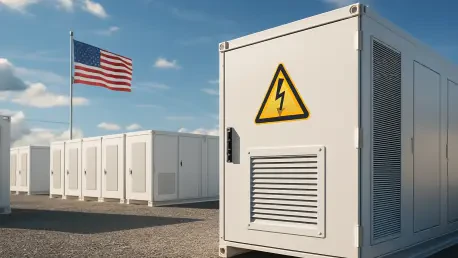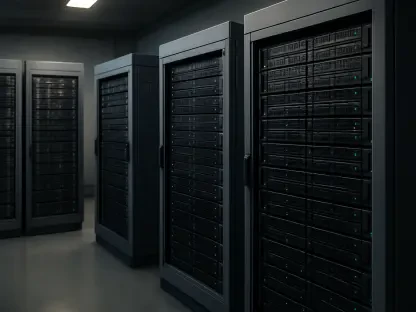In a nation racing toward a cleaner energy future, the quest for reliable, affordable storage solutions has become a critical challenge, especially as the grid struggles to store excess renewable energy for peak demand without high costs or safety risks. Enter sodium-ion batteries—a technology that could redefine how the U.S. manages its energy needs. A groundbreaking deal struck in late 2025 between Denver-based Peak Energy and Jupiter Power has ignited fresh hope, promising to deliver massive storage capacity and challenge the long-standing dominance of lithium-ion systems. Could this be the turning point for a more sustainable grid?
The significance of this development cannot be overstated. With a contract valued at over $500 million, Peak Energy will supply up to 4.75 gigawatt-hours of sodium-ion batteries to Jupiter Power by 2030, starting with 720 megawatt-hours in 2027. This marks one of the largest commitments to sodium-ion technology in the U.S., signaling a potential shift in the energy storage landscape. As lithium-ion batteries grapple with supply chain constraints and safety concerns, this deal highlights an alternative that could address pressing economic and environmental needs, paving the way for a deeper exploration of its impact.
A Landmark Deal Ignites Energy Innovation
On November 12, 2025, a historic agreement unfolded that could reshape the trajectory of energy storage in America. Peak Energy, a Denver innovator, partnered with Jupiter Power, a key player in grid-scale storage, to roll out sodium-ion batteries on an unprecedented scale. The phased plan, beginning with a significant delivery in 2027, targets high-demand markets like Texas’ ERCOT region, where reliable storage is vital for balancing renewable energy fluctuations.
This partnership isn’t just about numbers—it’s about challenging an industry norm. With lithium-ion technology facing scrutiny over cost and geopolitical risks, the decision to invest heavily in sodium-ion systems reflects a bold bet on domestic innovation. The contract’s potential to influence multiple projects across the Southwest Power Pool and beyond underscores a growing belief that alternatives can meet the grid’s toughest demands.
The Rising Need for New Energy Solutions
As the U.S. accelerates its transition to renewable sources like wind and solar, the strain on energy storage systems intensifies. Current lithium-ion batteries, while effective, come with steep price tags and vulnerabilities tied to global supply chains, especially under tightening trade policies. Safety incidents, such as thermal runaway risks, further complicate their widespread adoption for large-scale applications.
Sodium-ion technology steps into this gap with a promise of affordability and stability. Unlike its lithium counterpart, it relies on abundant, domestically sourced materials, reducing dependence on volatile international markets. With regulatory changes like new tax credit restrictions for foreign entities looming in 2026, the push for homegrown solutions has gained undeniable momentum, positioning sodium-ion as a strategic asset.
Unpacking the Strengths of Sodium-Ion Tech
What sets sodium-ion batteries apart in a crowded field? Peak Energy’s design offers a glimpse into their potential, featuring a passive cooling system that slashes auxiliary power use by an astonishing 97% compared to lithium-ion setups. This efficiency not only lowers costs but also simplifies maintenance, a crucial factor for grid operators managing vast networks.
Beyond efficiency, durability stands out as a key advantage. These batteries degrade 30% slower over a 20-year lifespan, translating to substantial savings on replacements and upkeep. Add to that a lower risk of overheating or fires, and sodium-ion emerges as a safer choice for sprawling storage projects. With early successes like a 3.5 megawatt-hour facility near Denver already operational, the technology’s viability is no longer just theoretical—it’s proven.
Industry Perspectives on a Shifting Market
Voices from the energy sector are buzzing with cautious optimism about sodium-ion’s ascent. Ravi Manghani, an analyst at Anza, notes, “This isn’t a full replacement for lithium-ion, but it’s a vital complement, especially for long-duration storage where cost and safety are paramount.” His perspective aligns with Jupiter Power’s strategic move to secure a domestic supply chain amid tightening trade regulations, a decision that could inspire others to follow suit.
Real-world progress adds weight to these insights. Drawing from trends in China, where sodium-ion deployments are steadily rising, the U.S. market share for this technology could climb to the low single digits by 2030. Peak Energy’s initial grid-scale project near Denver serves as a concrete example, demonstrating that sodium-ion isn’t just a concept—it’s a functional solution gaining traction among industry leaders.
Charting the Course for Wider Adoption
Scaling up sodium-ion technology in the U.S. demands a clear roadmap. One critical step involves aligning with policy incentives, such as prioritizing local manufacturing to tap into tax credits and sidestep tariff uncertainties. This approach could accelerate investment and reduce reliance on imported battery components, strengthening national energy security.
Targeted deployment offers another pathway forward. Focusing on regions with specific needs, like the PJM Interconnection or Southwest Power Pool, allows sodium-ion to prove its worth in long-duration storage scenarios where safety and cost savings are decisive. Building on pilot projects, similar to the Peak-Jupiter collaboration, can also boost investor confidence, while educating stakeholders through data-driven case studies will help dispel doubts about performance compared to established technologies.
Looking back, the journey of sodium-ion batteries in the U.S. took a defining turn with the monumental deal between Peak Energy and Jupiter Power. Reflecting on this milestone, the path ahead became clearer—strategic partnerships and policy alignment emerged as essential drivers. Moving forward, industry players must prioritize pilot initiatives to showcase reliability, while policymakers could consider incentives to spur domestic production. As the energy grid evolves, embracing sodium-ion technology offers a chance to balance innovation with practicality, ensuring a resilient and sustainable future for all.









